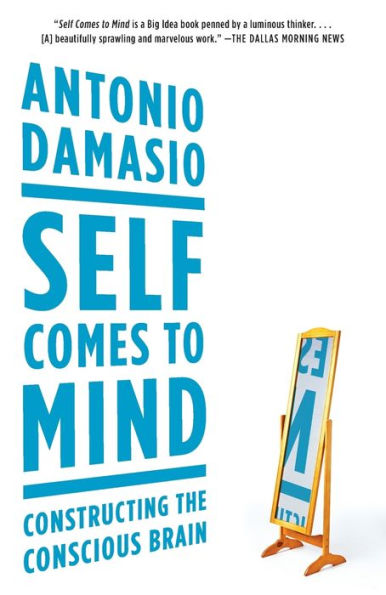Table of Contents
PART I STARTING OVER
1 Awakening 3
Goals and Reasons
Approaching the Problem
The Self as Witness
Overcoming a Misleading Intuition
An Integrated Perspective
The Framework
A Preview of Main Ideas
Life and the Conscious Mind
2 From Life Regulation to Biological Value 31
The Implausibility of Reality
Natural Will
Staying Alive
The Origins of Homeostasis
Cells, Multicellular Organisms, and Engineered Machines
Biological Value
Biological Value in Whole Organisms
The Success of Our Early Forerunners
Developing Incentives
Connecting Homeostasis, Value, and Consciousness
PART II WHAT'S IN A BRAIN THAT A MIND CAN BE?
3 Making Maps and Making Images 63
Maps and Images
Cutting Below the Surface
Maps and Minds
The Neurology of Mind
The Beginnings of Mind
Closer to the Making of Mind?
4 The Body in Mind 89
The Topic of the Mind
Body Mapping
From Body to Brain
Representing Quantities and Constructing Qualities
Primordial Feelings
Mapping Body States and Simulating Body States
The Source of an Idea
The Body-Minded Brain
5 Emotions and Feelings 108
Situating Emotion and Feeling
Defining Emotion and Feeling
Triggering and Executing Emotions
The Strange Case of William James
Feelings of Emotion
How Do We Feel an Emotion?
The Timing of Emotions and Feelings
The Varieties of Emotion
Up and Down the Emotional Range
An Aside on Admiration and Compassion
6 An Architecture for Memory 130
Somehow, Somewhere
The Nature of Memory Records
Dispositions Came First, Maps Followed
Memory at Work
A Brief Aside on Kinds of Memory
A Possible Solution to the Problem
More on Convergence-Divergence Zones
The Model at Work
The How and Where of Perception and Recall
PART III BEING CONSCIOUS
7 Consciousness Observed 157
Defining Consciousness
Breaking Consciousness Apart
Removing the Self and Keeping a Mind
Completing a Working Definition
Kinds of Consciousness
Human and Nonhuman Consciousness
What Consciousness is Not
The Freudian Unconscious
8 Building a Conscious Mind 180
A Working Hypothesis
Approaching the Conscious Brain
Previewing the Conscious Mind
The Ingredients of a Conscious Mind
The Protoself
Constructing the Core Self
The Core Self State
Touring the Brain as It Constructs a Conscious Mind
9 The Autobiographical Self 210
Memory Made Conscious
Constructing the Autobiographical Self
The Issue of Coordination
The Coordinators
A Possible Role for the Posteromedial Cortices
The PMCs at Work
Other Considerations on the Posteromedial Cortices
A Closing Note on the Pathologies of Consciousness
10 Putting It Together 241
By Way of Summary
The Neurology of Consciousness
The Anatomical Bottleneck Behind the Conscious Mind
From the Ensemble Work of Large Anatomical Divisions to the Work of Neurons
When We Feel Our Perceptions
Qualia I
Qualia II
Qualia and Self
Unfinished Business
PART IV LONG AFTER CONSCIOUSNESS
11 Living with Consciousness 267
Why Consciousness Prevailed
Self and the Issue of Control
An Aside on the Unconscious
A Note on the Genomic Unconscious
The Feeling of Conscious Will
Educating the Cognitive Unconscious
Brain and Justice
Nature and Culture
Self Comes to Mind
The Consequences of a Reflective Self
Appendix 299
Notes 319
Acknowledgments 343
Index 345



